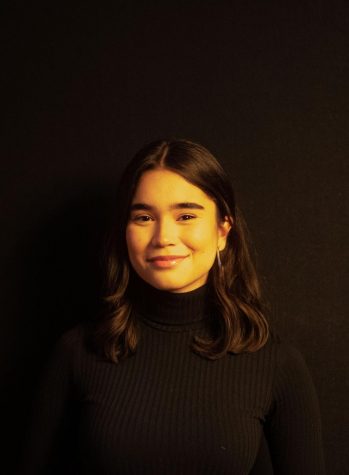San Antonio Museum of Art opens new exhibit: ‘No Oceans Between Us’
March 8, 2021
On display from Feb. 12 until May 9, the San Antonio Museum of Art (SAMA) presents: “No Oceans Between Us: Art of Asian Diasporas in Latin America & The Caribbean, 1945–Present.” The exhibition features works of modern and contemporary art made by Latin American and Caribbean artists of Asian descent. “No Oceans Between Us” is based on a permanent collection by the Museum of the Americas of the Organization of American States (OAS AMA), which was curated by Adriana Ospina, OAS AMA’s Collections Curator and Educational Programming Manager. For SAMA, the exhibition was curated by Lucía Abramovich Sánchez, Associate Curator of Latin American Art, and Yinshi Lerman-Tan, Acting Associate Curator of American and European Art. The exhibition is found at Cowden Gallery and it even includes didactics in both English and Spanish, not only describing each piece but also offering a brief historical account of the Asian diasporic communities in each country.
The collection showcases both the artists’ Latino/Caribbean identities and their Asian cultural heritage. “No Oceans Between Us” touches many themes like diasporas, colonialism, migrations, culture exchange, identity, racial diversity, family and the meaning of home. The works are made up of a range of mediums, including painting, new media and installation art. The artists featured are from different Latin American and Caribbean countries, including Argentina, Brazil, Cuba, Guyana, Jamaica, Mexico, Panama, Peru, Suriname and Trinidad and Tobago.
Argentina
The first work presented in the gallery is “Filles de Kilimanjaro III (Miles Davis),” 1976 by Kazuya Sakai. It is a vibrant piece with colorful channels that move across a vast green canvas. “The reason that we were excited to start the exhibition with this painting in particular is because we really thought it sort of visually and metaphorically captures some of the themes of this exhibition, which are mainly migration and diaspora,” expressed curator Yinshi Lerman-Tan in the virtual curator’s talk.
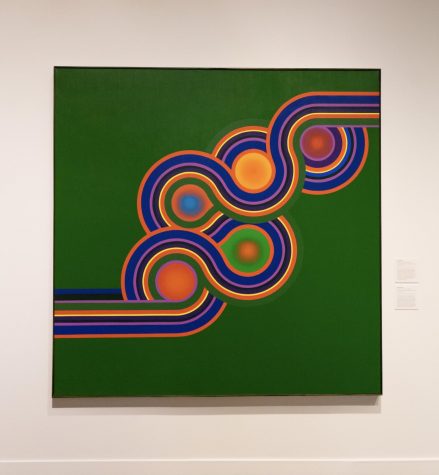
Acrylic on canvas
Kazuya Sakai
Brazil
Inspired by Japanese painting techniques and haikus, Tomie Ohtake’s piece “Untitled,” 1968 is the most recognizable piece of the exhibition. It’s even placed on its own extensive blue wall that compliments the blue hues of the painting itself. In her work, Ohtake utilizes the philosophy of the haiku: “Haiku poems convey a view of the world in seventeen syllables. My painting also attempts to synthesize forms, reducing images to their essential minimum and is therefore universal.” Her intention is perfectly executed in this piece. The painting is indeed harmonious in its simplicity.
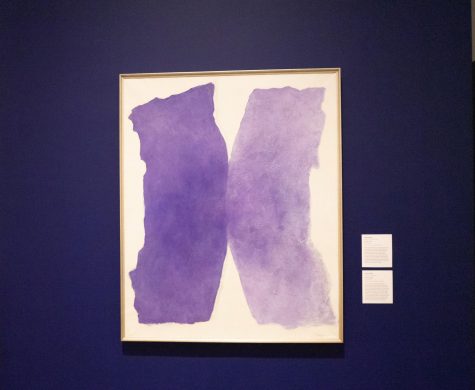

Oil on canvas
Tomie Ohtake
Mexico
“Yellow Curve-Feather Duster,” 2019 is from the series Subtle Oblivion by Hisae Ikenaga. This eye-catching sculpture is made out of chromed steel, MDF with Formica and a duster. Ikenaga often utilizes everyday items to create her artworks to try and find value in them. This piece gives a fresh perspective to the otherwise boring concept of domestic life and its duties.
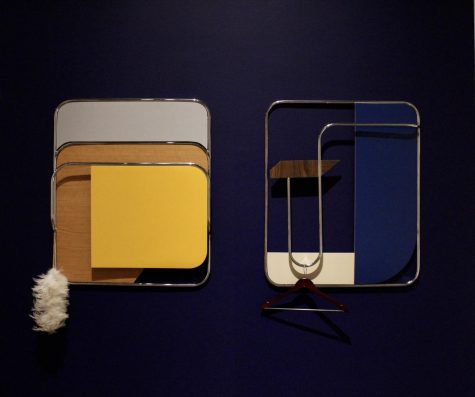

Chromed steel, MDF with Formica and duster
Hisae Ikenaga
Peru
“Autorretrato” (Self-portrait), 2014 by Andrea Saito is a group of ten intaglio prints that tell her personal history. Each print includes a mysterious image alongside a simple yet powerful statement, like “Soy una posibilidad (I am a possibility), Soy parte de todo y todo es parte de mi (I am part of everything and everything is a part of me) and Soy herencia (I am heritage).”
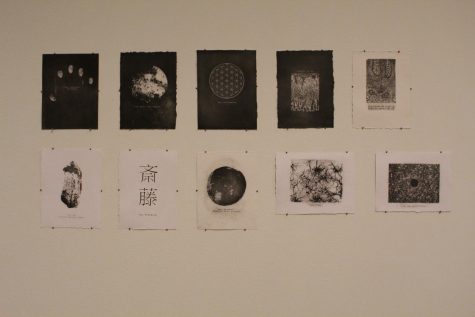

Intaglio print
Andrea Saito
Trinidad and Tobago
“Las Palmas” (The Palms), 1973 is a colorful painting depicting layers of palm tree leaves by M.P. Alladin. The style in this work is inclined more towards cubism and geometric abstraction even though the painting’s subject is based on vegetation. The painting is very striking with its sharp dark lines. Meanwhile, the colors offset the effect and give it more balance. “Las Palmas” captures the customary feel of Caribbean nature, breathtaking and distinctive.
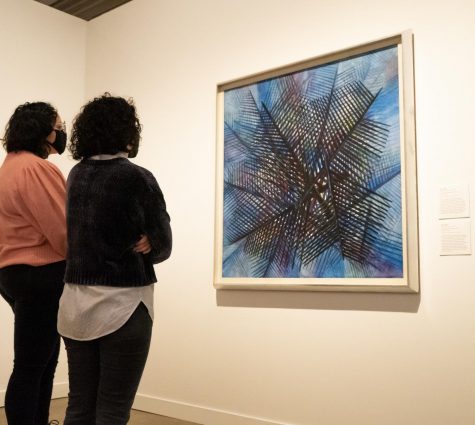

Acrylic on canvas
M.P. Alladin
As a whole, the exhibition doesn’t just serve as an aesthetic plethora of art; instead, it’s a history lesson on how masses of individuals traveled across the boundless ocean and prospered in countries very different from their own. It showcases the creativity of people who are products of such a unique cross-cultural background and sheds light on each of their perspectives. The San Antonio Museum of Art is open Tuesday through Sunday. For more specific hours, you can visit their website.

